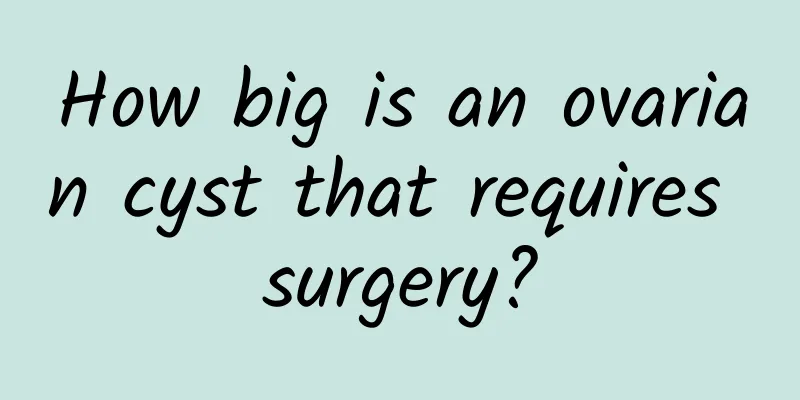Uterine fibroids generally present with more symptoms such as abdominal masses

|
Uterine fibroids usually present with abdominal lumps, and patients can find this symptom in their abdomen after touching it. So do you know what the symptoms of uterine fibroids are? Regarding this question, let the authoritative experts explain it to us in detail. The symptoms of uterine fibroids mainly include the following aspects: 1. Abdominal mass: Patients feel abdominal lumps themselves, mostly after uterine fibroids grow out of the pelvic cavity. It is often obvious in the early morning when the bladder is full on an empty stomach. It is a common symptom of uterine fibroids. Because the uterus and fibroids are pushed upward, it is easy for patients to touch them themselves. If the uterus is larger than 4 to 5 months of pregnancy, it can also be touched when the bladder is not full. Uterine fibroids are generally located in the middle of the lower abdomen, and a few may be located on one side of the lower abdomen. They are hard or have an uneven feeling. Larger ones are more likely to be degenerated, softer and smoother. Most grow slowly. A very small number may grow faster or be accompanied by dull pain, and malignant changes should be suspected. 2. Pain: The symptoms of this type of uterine fibroids are that the tumor compresses the pelvic blood vessels, causing congestion, or compresses the nerves, or the pedicled submucosal fibroids can stimulate uterine contraction, which is discharged from the uterine cavity to the outside, causing the cervical canal to widen and cause pain; or the necrosis and infection of the fibroids cause pelvic inflammatory disease, adhesions, traction, etc. If some individuals have red degeneration of uterine fibroids, the abdominal pain is more severe and accompanied by fever. Acute and severe abdominal pain also occurs when the pedicle of the uterine subserosal fibroids is torsion or the axial torsion of the uterus. Large subserosal fibroids grow into the broad ligament, which can not only compress the nerves and blood vessels to cause pain, but also compress the ureters to cause ureteral or renal hydrops and cause low back pain. Those with severe and progressive dysmenorrhea are often caused by uterine fibroids complicated by adenomyosis or endometriosis. This is also a common symptom of uterine fibroids. The above is the explanation given by experts on the symptoms of uterine fibroids. If you have abdominal lumps, the best thing to do is to go to the gynecology department for a checkup. What the experts want to tell you is that in daily life, we must pay attention to our living habits and not let our bad habits lead to the occurrence of diseases. |
<<: Patients with uterine fibroids will basically have compression symptoms
>>: Patients with uterine fibroids may find themselves experiencing symptoms of vaginal bleeding
Recommend
How can endometriosis be detected by B-ultrasound?
B-ultrasound is a commonly used technology for ex...
What should you pay attention to after menopause
What should I pay attention to after menopause? A...
Do you have to sweat profusely to lose weight? Famous doctor relies on low-impact "Niya exercise" to lose weight
"Why can't I lose weight even though I e...
Women may experience vaginitis due to factors
When the natural defense function of the vagina i...
Will mild cervical precancerous lesions recur?
Will mild cervical precancerous lesions recur? Ge...
Hamburger meat contains ractopamine, Health Department: Pork should be zero
The hamburger meat used by a chain breakfast shop...
Several common symptoms of dysmenorrhea in women
Many female friends do not understand the symptom...
What symptoms do women usually suffer from when they have an enlarged cervix?
Cervical hypertrophy is one of the many gynecolog...
Will irregular menstruation affect pregnancy?
Will irregular menstruation affect pregnancy? 1. ...
Renée Zellweger gained weight and lost weight by eating meat and giving up sweets
Renée Zellweger, who has gained super popularity ...
How long does it take for cervical erosion surgery to work?
How long does it take for cervical erosion surger...
Experts explain the impact of painless abortion costs
Painless abortion is a relatively advanced aborti...
The more you eat, the thinner you get! Green vegetables, fruits and pods ranked in the top three
The key to food is not to eat more and feel fulle...
Beware! Abortion is the number one killer of cervical erosion
With the development of the times, more and more ...
The harm of not timely treatment of cervical precancerous lesions
Cervical precancerous lesions are a major killer ...









